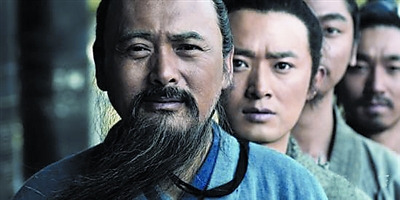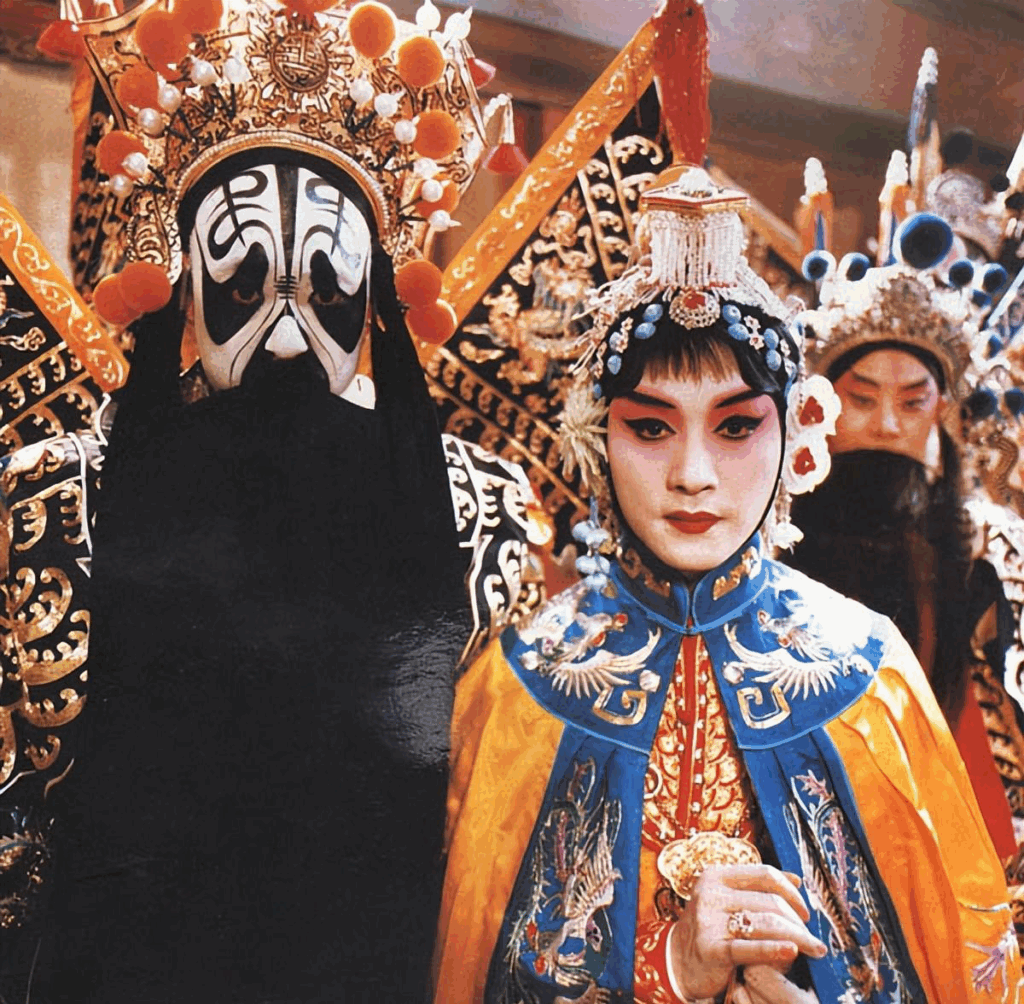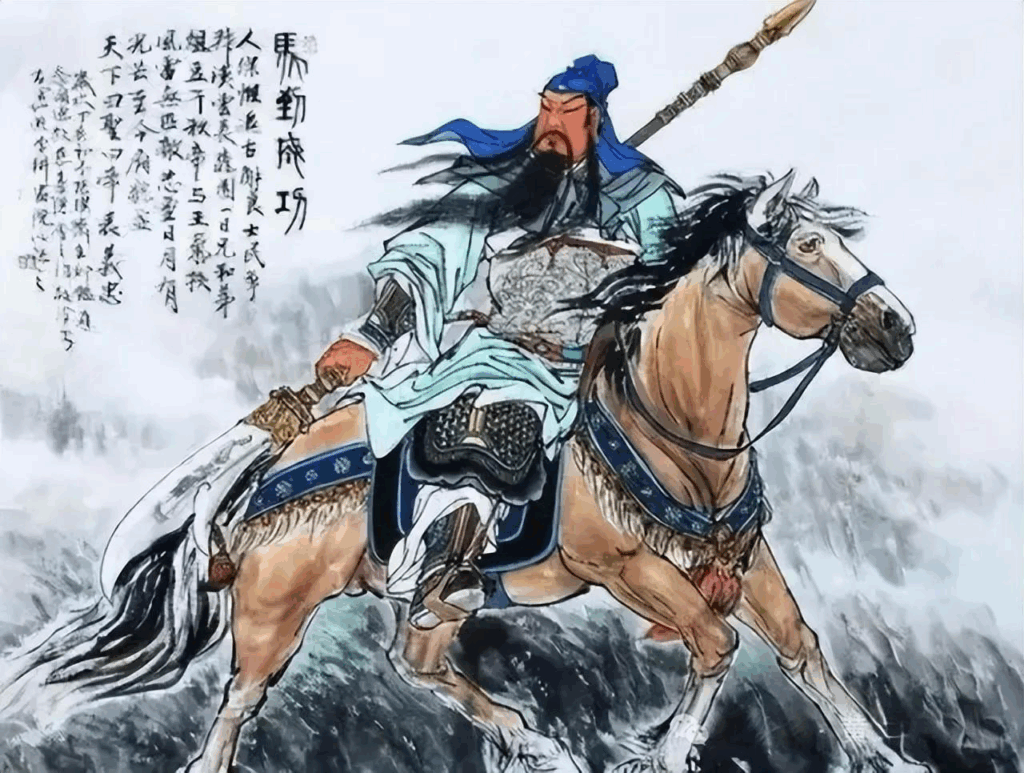
When we look at ancient Chinese portraiture, we are struck by a curious and striking detail: with the exception of a few exceptional figures such as Sima Qian, Cai Lun, and Zheng He—who bore beards for particular symbolic or practical reasons—most adult men wore facial hair of varying styles and lengths.
The Wu Za Zu of the Ming period contains vivid, almost hyperbolic descriptions of beard length: “Cui Yan’s beard was four feet long; Wang Yu and Liu Yuan’s were both three feet; Yuan Ziyao’s reached five feet; Xie Lingyun’s beard touched the ground; Guan Yu and Hu Tianyuan’s extended several feet; Shi Heng and the Qing official Zhang Jingxiu had beards past their knees.” Such accounts, though likely exaggerated, reveal that beards were not just a matter of grooming but a symbol of dignity, power, and identity.
This historical tradition of beard-wearing carries over into Chinese opera, where male roles are distinguished by false beards known as ránkǒu, categorized according to character, age, and status—“three-beards,” “full beards,” and “tied beards,” in hues of black, white, and gray. In modern times, though, bearded men are rare outside of theater, film sets, or the artistic community—especially in cities. The shift away from facial hair is not trivial; even a small beard can carry cultural, biological, and aesthetic weight.

Charles Darwin once suggested that beards, much like a lion’s mane, offer a protective buffer around vulnerable areas such as the throat while also projecting masculine presence. In literature, the beard is often a synecdoche for masculinity: in Dream of the Red Chamber, Jia Baoyu’s self-description as a “bearded, dirty creature” underscores how a beard evokes manhood. As a secondary sexual trait, beards have served practical functions in human history: in cold climates, a dense beard acts like a natural scarf to help retain heat; in summer it screens the face from insects and wind; in combat, it may cushion blows. A study at the University of Utah suggests that a hairy surface can absorb about 16 percent more impact force than a hairless one, hinting that facial hair might have even shielded the face from injury in ancient conflicts.
In Chinese myth and culture, beards held symbolic importance. The dragon—a potent totem in Chinese tradition—features a prominent “dragon beard,” perhaps reflecting a reverence for beards themselves. In Records of the Grand Historian, when the emperor Huangdi’s cauldron was completed, a beard-draped dragon greeted him; lesser officials who clung to the beard while ascending to the heavens fell when it tore off, giving birth to a symbolic meaning of “grasping the beard” as mourning the emperor.

Linguistically, the modern term for facial hair, húxū (胡须), originally referred to men with beards among the “Hu” (northern) peoples who typically grew more luxuriant facial hair than the Han Chinese. Over centuries the term narrowed to mean simply “beard.” Ancient Chinese distinguished parts of the beard: zī (髭) for the upper lip, rán (髯) for the cheeks, xū (须) for the chin. Another early character ěr (而), drawn in oracle-bone script as wisps of hair under a face, even functioned as the word “beard.” The character “nài” (耐)—which today means “endure”—once represented a legal penalty involving forced shaving of the beard and sideburns for one to two years. Because hair was considered a gift from one’s parents under Confucian ethics, removing the beard was deeply humiliating, “unfilial,” and psychologically painful.
Yet a beard need not be long to be meaningful—it must be well maintained. In the Book of Songs Shijing, a hunter’s “beautiful and suave” visage is often taken to signify a well‐groomed beard. Han Dynasty texts link a strong beard to vigorous health. During the Three Kingdoms era, Guan Yu was famed for his flowing beard; in the Romance of the Three Kingdoms, he claimed that in autumn he might lose a few hairs, which he would carefully bag; in winter he would protect them in silk. Such detail elevated the beard to a mark of dignity and loyalty.
With time, fashions shifted. In the Wei–Jin period, white facial complexions and delicate features became ideals of refined beauty, downplaying heavy beards. Even as some literati—like Zhang Hua or Ge Hong—retained facial hair and codified beard culture (including dyeing gray whiskers black), the prevailing taste among elite circles veered toward hairlessness or minimal whiskers. In Tang China, emperors like Taizong and Xuanzong even styled elegant “curly beards” to evoke dragon imagery. But the mainstream aesthetic favored thin, neat beard lines rather than luxuriant growth.
By the Song Dynasty, a professional “tweezers and shaving” trade had matured. In Along the River at Qingming, a barbershop scene shows a customer being shaved with razors. Stories recount a barber who shaved one cheek only to find the other side regenerated instantly, as if hair grew faster than he could remove it. Even officials plucked hairs from a graying beard to adjust their image among courtiers and concubines. The term liúxū (flowing beard) also became a metaphor for flattery, as when a minister wiped soup off a superior’s beard in obsequiousness.
Later dynasties maintained the tradition of beards among gentlemen. Under the Yuan, high-ranking ministers dyed gray beards, maintained long whiskers, and were noted in court chronicles. The Ming Code dictated that officials preserve a dignified appearance with neatly trimmed facial hair. Zhang Juzheng combed his beard with a lead comb to keep it black and glossy. Under the Qing, shaving the head was mandated, but men were still permitted to keep beards—especially in elite and official classes—though laborers often went clean-shaven for practicality.
Why then did the bearded man, once ubiquitous, disappear from modern streets?
The decline of facial hair in China is intertwined with Western influence. Following the 1911 Revolution, the pigtail (queue) was abandoned, replacing traditional hairstyles with “new-style barbershops” modelled on Western salons. This aesthetic shift favored clean-shaven faces or modest mustaches. Meanwhile, in the West, the early 20th century saw a sharp decline in beards. The 1918 influenza pandemic raised hygiene awareness, and the adoption of gas masks in World War I made facial hair a liability. The arrival of the safety razor made daily shaving convenient, clean, and affordable.

Chinese elites and public figures adopted these modern norms. The upper lip–style moustache reminiscent of German military fashion became popular in late Qing and early Republican circles. During wartime and as nation-building advanced, facial hair was often associated with old regimes or militancy. After 1949, modern hygiene campaigns and faster-paced urban life favored the ease of a clean-shaven face. In professions such as the military, police, banking, transport, and education, regulations and norms reinforced shave‑norms for men. Electric shavers made grooming almost as easy as brushing one’s teeth. Media and advertisements further normalized shaving—and the beard gradually receded into niche or artistic domains.
In contemporary urban life, a long beard is impractical. Commuters packed in subways, meals that soil facial hair, and tight routines leave little time for grooming. A long beard in close quarters might be an annoyance or safety risk. Facial hair also hinders mask-wearing and hygiene—an especially salient disadvantage during epidemics.
Ultimately, modern aesthetics favor clean lines, minimalism, and perceived neatness. A beard that is ungroomed can appear scruffy rather than dignified. Combined with social norms, practical inconveniences, and changing ideals of masculinity, the era of broad facial hair has largely vanished. The once everyday badge of maturity and authority now lives on mostly in art, performance, and the pages of history.
Source: The World of Chinese, National Humanity History, wenxiaobai, xhgmw, sohu



